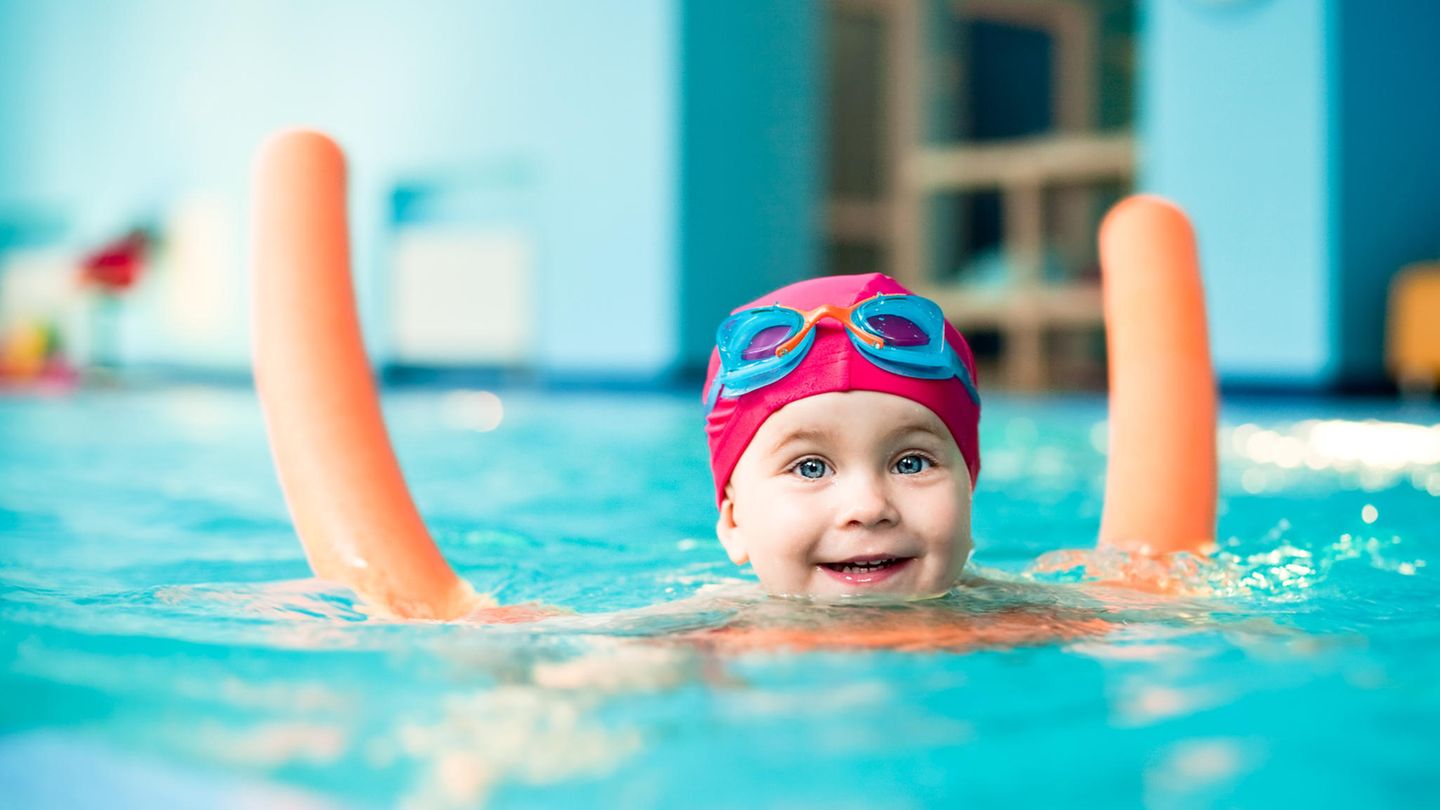Unfortunately, fewer and fewer children can even stay above water, especially the youngest. Swimming aids are designed to take away children’s fear of the cool water and encourage them to be ambitious.
Alongside running, swimming is one of the most natural (and healthiest) ways to move around. Unlike running, which every little person can do at some point without any major difficulties or even training, swimming has to be learned. And this is exactly where things are currently going badly in Germany. Fewer than 15,000 seahorses were sewn onto swimming trunks and swimsuits in 2020. A colossal drop. In 2019, just under 50,000 girls and boys managed to get the important swimming badge. This was the sobering conclusion drawn by the German Lifesaving Association (DLRG) after the second Corona summer of 2021. Germany is increasingly becoming a country of non-swimmers.
“Around 70,000 children were unable to learn to swim in 2020,” said Frank Villmow from the DLRG executive board. Swimming pools and swimming instructors are slowly starting up again. But demand for swimming lessons far exceeds supply. This makes it all the more sensible for parents to introduce their children to the water themselves. Because the more confident they are, the easier it will be to take swimming lessons with professional instructors later on. A recent survey by showed that 20 percent of parents surveyed would describe their child as a non-swimmer. About the same number rated their offspring as “unsafe.” The survey was about the swimming abilities of children between the ages of six and ten.
Various swimming aids make it easier to jump into the unknown. In this article, you will find out which tools are suitable for which age and how to use them correctly.
1. Swimming aids Class A: Water familiarization for babies
As with many other things, babies and toddlers develop very differently when it comes to bathing and swimming. As fearless as some children are when they are just a few months old, romping around in the tub or crawling or storming into the paddling pool at the outdoor pool, some children are still afraid when they go near a swimming pool at primary school age. In official courses, babies and infants can become familiar with the splashy element of water from the age of four months. The sole aim here is to introduce the little ones to the cool water and to take away their fear. “Learning to swim aids” in the broadest sense are small mats and the most popular. They belong to class A and are designed to do nothing other than keep babies above water. The little ones are pulled or pushed through the water with them. Depending on their size, these tools accompany children up to the age of three. When buying, you should pay attention not only to the CE mark but also to the weight for which the buoyancy aid is approved.
2. Swimming aids Class B: Toddlers and beginners
In class B, things are getting serious. Swimming aids in this category definitely deserve their name. Because instead of being chauffeured across the water, beginners have to do something themselves to stay above it. The classic and favorite of many parents are the good old water wings. The inflatable cushions () are pulled over the little ones’ arms. There are now models on the market where the wings are connected in front of the chest. This provides even more buoyancy (and in the best case less fear). These are then usually made of a light, filled polyester fabric and do not even need to be inflated. Just like the In both variants, the child’s head area remains safely above water. Despite this, they can move and try things out quite freely. The principle is similar for the other Class B swimming aids. With one exception.
So-called Swimming cushionlike that are attached with a kind of belt under the arms or to the torso. The actual cushions, in this case made of cotton, are filled with air and bring the little swimmers into the correct position in the water. In order to slowly wean them off the buoyancy aid, some of the pressure is gradually removed from the cushion.
are made of lightweight EVA foam. Similar to weight lifting, more or fewer discs can be clicked together and put over the arms with a flexible cuff. The principle: the safer the little swimmer is in the water, the fewer discs have to be “mounted”. Because the fewer discs, the less buoyancy. A small advantage over the inflatable version: According to the manufacturer, the swimming discs are also suitable for children and young people who want to learn to swim a little later. The maximum load limit is therefore 60 kilograms.
Children who enter the water with a Otherwise, the popular swimming aids that are worn around the belly (Important: not around the hips!), similar to swimming discs. Depending on how confidently the child moves in the water, individual polystyrene or foam elements can be threaded on or removed. When buying a swimming belt, make sure that the swimming aid is equipped with buckles and a safety lock. The length of the belt should also be variable and adjustable in a few simple steps. belong to class B of swimming aids. The swimming aids are recommended for children aged two and over who can keep their head above the water surface without help, have some swimming experience and can already manage their first swimming movements. They should not be confused with life jackets, because life jackets are not designed to keep helpless and unconscious people above water. Vests for learning to swim are available as inflatable versions or with flexible and replaceable buoyancy aids.
3. Class C swimming aids: The kick for young and old
Class C is less about safety, but about tools that support small (and large) swimmers in training and certain movement sequences. One of the most important tools in this category is the also called a kickboard, which even top athletes use at the edge of the pool during training. This also makes it clear: Class C swimming aids should only be used by confident swimmers who can safely use the board or the can hold themselves. As with all other swimming aids, the so-called pool noodles should only be used by children under supervision. Swimming boards are used, among other things, to learn the correct kick, to train it and to improve it. Similarly, the focus is on arm strength and technique when the board is clamped between the legs.
More information can be found here.
Source: Stern
I am Pierce Boyd, a driven and ambitious professional working in the news industry. I have been writing for 24 Hours Worlds for over five years, specializing in sports section coverage. During my tenure at the publication, I have built an impressive portfolio of articles that has earned me a reputation as an experienced journalist and content creator.




